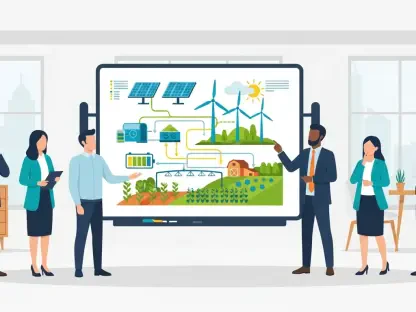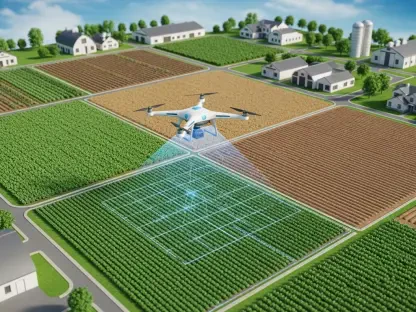In a nation battered by relentless conflict and staggering food insecurity, a groundbreaking initiative has emerged to offer a lifeline to millions of Sudanese facing hunger and despair, as Sudan, once a land of significant agricultural promise, has seen its farming systems crumble under the weight of violence between opposing forces. This has left over half its population—more than 25 million people—struggling to access basic sustenance. Amid this dire landscape, a newly launched collaborative effort brings hope by aiming to restore agricultural productivity and support the smallholder farmers who are vital to the country’s food supply. Backed by a coalition of international and local partners, this ambitious project seeks not only to address immediate needs but also to lay the foundation for sustainable agrifood systems. By focusing on safer regions and leveraging market-driven strategies, it promises a pathway out of crisis, sparking renewed optimism for a sector that could once again feed a nation.
Reviving Agriculture in a War-Torn Nation
Sudan’s agricultural sector, previously a cornerstone of national self-sufficiency, has been decimated by ongoing conflict, with cereal harvests plummeting by nearly half in recent years. The Sustain Sudan Project steps into this breach with a clear mission to restart food production in areas less affected by violence. Targeting 350,000 smallholder farmers, the initiative aims to cultivate 1.7 million acres of farmland over the 2025–2026 seasons. Essential inputs like fertilizers and seeds are being prioritized to boost yields by at least 40% compared to unfertilized plots, a critical step toward alleviating hunger for approximately two million households. This focus on immediate agricultural revival is not just about planting crops but about rebuilding livelihoods shattered by displacement and economic collapse, offering a tangible solution to a crisis that has left fields barren and communities desperate for stability.
The project’s approach is rooted in recognizing the unique role of smallholder farmers as the backbone of Sudan’s economy. By ensuring access to vital resources, the initiative seeks to empower these farmers to reclaim their productivity despite the surrounding turmoil. Beyond the mere distribution of supplies, there is a concerted effort to reconnect fragmented farming systems, addressing the systemic disruptions caused by conflict. The scale of the intervention, with its ambitious acreage and household targets, underscores a commitment to impactful change. Partners involved in the project understand that reviving agriculture in Sudan is not a short-term fix but a stepping stone to long-term food security. This strategic vision aims to transform the current narrative of scarcity into one of resilience, ensuring that even in the face of adversity, the seeds of recovery are sown deeply and effectively across the nation’s agricultural heartlands.
Market-Driven Solutions for Lasting Change
One of the standout features of this initiative is its departure from traditional aid models, instead embracing a market-based strategy to foster resilience within Sudan’s agricultural sector. By collaborating with local agro-dealers, logistics providers, and financial institutions, the project works to rebuild supply chains that have been fractured by conflict. Subsidies are a key component, slashing the cost of farming inputs by at least 30% at retail, making them accessible to those who need them most. The plan to distribute 260,000 metric tons of fertilizers is a bold starting point, aimed at jumpstarting production while keeping markets functional. This approach ensures that small- and medium-sized enterprises remain viable, creating an economic buffer against future crises and preventing dependency on handouts.
Further enhancing this strategy are innovative measures like bulk procurement, trade guarantees, and transport insurance, all designed to lower barriers for traders and farmers alike. These tools address the skyrocketing costs of essentials like fertilizers, which have become prohibitive amid Sudan’s economic instability. By maintaining market dynamics, the project not only supports immediate needs but also builds a framework for sustainable growth. The emphasis on private sector involvement ensures that solutions are grounded in real-world realities, avoiding the pitfalls of disconnected aid efforts. This market-driven focus is a calculated move to preserve the agricultural economy’s vitality, positioning it to withstand shocks and adapt to challenges. Ultimately, the goal is to create a self-sustaining cycle where affordability and accessibility drive productivity, benefiting both individual farmers and the broader community in a lasting, meaningful way.
Navigating Conflict and Challenges
Operating in a conflict-ridden environment like Sudan requires a delicate balance of ambition and caution, a reality the Sustain Sudan Project fully acknowledges. The initiative prioritizes conflict sensitivity, ensuring that interventions do not exacerbate local tensions or reinforce existing power struggles. By initially focusing on more secure regions, the project minimizes risks to both personnel and resources while maximizing early impact. Expansion into other areas will only occur when conditions permit, reflecting a pragmatic approach to an unpredictable landscape. Guidance from partners with expertise in political dynamics helps shape delivery decisions, ensuring they are strategic and informed by a deep understanding of Sudan’s complex socio-political fabric.
The challenges extend beyond security concerns to include economic hurdles that threaten the project’s goals. Skyrocketing input costs and disrupted supply chains pose significant barriers to affordability and accessibility for farmers already stretched thin. To counter these issues, the initiative leverages local networks and private sector partnerships, aiming to stabilize markets even under duress. Constant monitoring of on-the-ground conditions is integral to adapting plans as needed, ensuring flexibility in the face of volatility. Digital tools and evidence-based practices also play a role in overcoming logistical obstacles, streamlining operations in a way that maintains effectiveness. While the path ahead is fraught with uncertainty, this careful, phased approach demonstrates a commitment to delivering results without compromising safety or sustainability, setting a precedent for humanitarian efforts in conflict zones.
Empowering Farmers for the Future
Delivering farming inputs is only part of the equation; equipping Sudan’s farmers with the skills and resources to maximize their potential is equally vital. The Sustain Sudan Project goes beyond mere supply by offering comprehensive support through training programs and digital advisory services. These efforts are designed to enhance productivity by providing farmers with modern techniques and actionable insights tailored to their unique challenges. A voucher system specifically for smallholders ensures that aid reaches those most in need, while also protecting market integrity by preventing distortions. Led by specialized partners, this capacity-building component aims to foster self-reliance among communities that have endured displacement and loss, turning survival into sustainable progress.
The ripple effects of empowering farmers extend far beyond individual fields, promising broader community benefits. By integrating digital tracking and market oversight, the initiative ensures that resources are used efficiently and transparently, building trust among stakeholders. Agronomic support addresses specific needs, helping farmers adapt to changing conditions and improve yields over time. This focus on education and innovation is not just about the present crisis but about preparing for future uncertainties, ensuring that farmers are not merely recipients of aid but active participants in recovery. The long-term vision is clear: to create a generation of skilled agriculturalists capable of driving Sudan’s food security forward. Through these targeted interventions, the project seeks to transform hardship into opportunity, laying a foundation for enduring growth in a sector critical to national stability.
Collaborative Powerhouse Behind the Mission
A defining strength of this initiative lies in the diverse coalition of partners united under a shared goal to support Sudan’s agricultural revival. Key organizations, including those with expertise in fertilizer development, maize and wheat improvement, and political analysis, have come together to pool their knowledge and resources. A pivotal inception meeting held in Nairobi served as the launchpad for aligning strategies, fostering trust, and ensuring that every voice—from private sector representatives to agricultural specialists—was heard. This collaborative framework ensures a holistic approach, addressing everything from input delivery to market dynamics with a depth of understanding that only such varied expertise can provide.
The synergy among partners translates into actionable outcomes on the ground, with each entity contributing specialized skills to tackle Sudan’s multifaceted crisis. Private sector involvement brings a practical perspective, ensuring that solutions are not only innovative but also feasible within the country’s economic constraints. Meanwhile, strategic coordination keeps the project focused, even as it navigates a volatile environment. This spirit of unity is evident in the shared determination to adapt and respond to challenges, whether they stem from security risks or logistical hurdles. By leveraging collective strengths, the partnership amplifies the initiative’s potential impact, setting a model for how collaborative efforts can address complex humanitarian issues. The result is a robust network committed to turning vision into reality for Sudan’s struggling farmers and communities.
Milestones and Scalability for Tomorrow
Looking ahead, the Sustain Sudan Project has outlined a clear timeline to achieve measurable impact, starting with the delivery of 50,000 metric tons of fertilizers for the current winter season in stable regions. This initial phase focuses on meeting urgent needs, ensuring that farmers in safer areas can begin planting without delay. Plans for the following year include broadening the scope to encompass seeds and crop protection products, alongside expanded outreach to more farmers. The target of engaging 350,000 farmers and supporting two million households reflects an ambitious yet achievable goal, demonstrating a commitment to scaling impact across the nation. This roadmap prioritizes both immediacy and growth, balancing short-term relief with a vision for widespread recovery.
Scalability remains at the heart of the project’s long-term strategy, with an eye toward building a resilient agricultural sector capable of enduring future challenges. Strengthening private sector capabilities now ensures that markets, traders, and distribution networks are robust enough to support post-conflict reconstruction. Enhanced farmer support programs planned for the coming year will further solidify these gains, creating a sustainable cycle of productivity. The emphasis on adaptability means that as conditions evolve, so too will the initiative’s approach, ensuring relevance and effectiveness over time. By laying this groundwork, the project not only addresses today’s hunger crisis but also positions Sudan for a stronger, more self-sufficient future. This forward-thinking perspective offers a blueprint for transforming agricultural recovery into a cornerstone of national rebuilding efforts.









